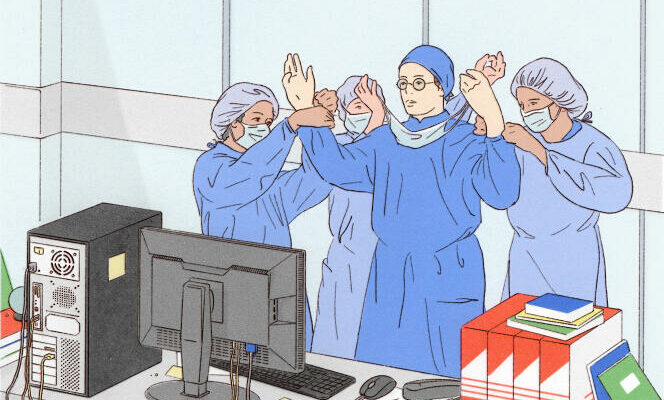These are two doctors who meet again twenty years after having studied together. One became an ophthalmologist, the other a urologist. After a few minutes of getting news about their respective jobs, the first asks: “And what do you do about emails? » Surprise from the urologist. For him too, it was hell to know when and how to respond to the increasing number of patients contacting him!
It may seem strange, but doctors capable of carrying out the most delicate operations can have difficulty managing their email inbox. What do they think of this funny red button of which here is a photo? Can you put olive oil in your salad before a colonoscopy? Could they send a health certificate for a run the day after tomorrow? Thumb graft threads don’t seem to be holding, could a doctor take a look? “so as not to overcrowd the emergency room” ? Buried under the messages, many caregivers have not yet found a way to respond. In the evening, after a day’s work, at the risk of ruining your personal life? Between two patients, in a concise manner, at the risk of missing something? And why not never?
Most of the doctors interviewed for this article trace the surge in the number of electronic messages to post-Covid-19. Until confinement, it was complicated to contact your doctor by email. You already had to have your contact details. And if he gave you his business card with his email address, we understood that we had the right to use it only at the point of death. “Covid has intensified the use of emails. The secretaries were no longer there. The fear of poorer follow-up has opened the floodgates to different modes of communication”remembers Marie Msika Razon, general practitioner in Paris.
In less than five years, “we went from “how to get patients to use emails to communicate with doctors” to “they do it too much!” », notes A. Jay Holmgren, assistant professor of medicine at the Center for Clinical Informatics and Improvement Research at the University of California who has been working on the subject for several years. A study that he conducted in 2021 in the United States and published in the Journal of the American Medical Informatics Association notes a 157% jump in the number of electronic messages from patients to their doctors between the start of 2020 and the end of 2021. In France, the department of research, studies, evaluation and statistics of the Ministry of health has no study on the subject and the AP-HP has not carried out any either.
You have 81.07% of this article left to read. The rest is reserved for subscribers.
